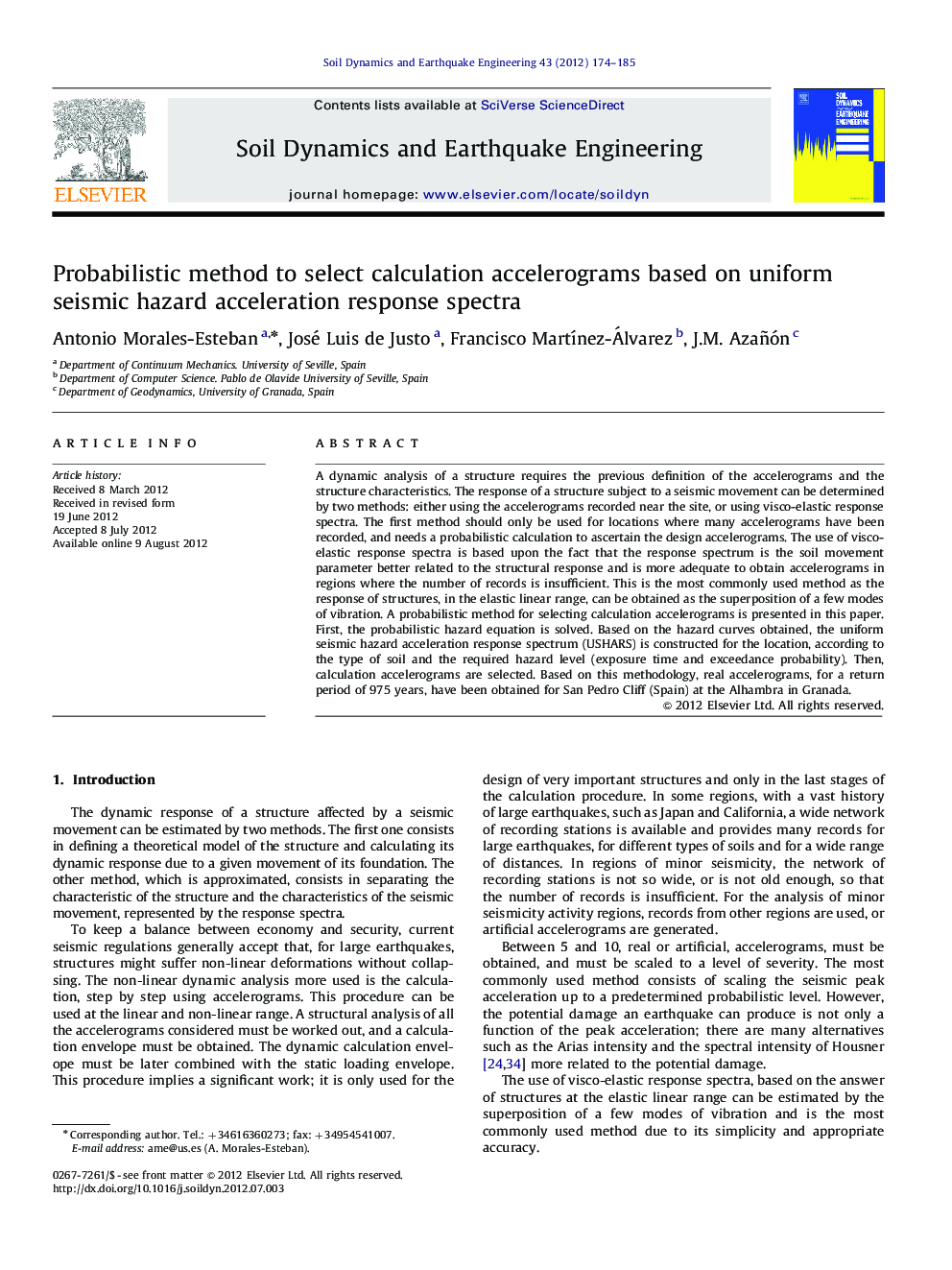| Article ID | Journal | Published Year | Pages | File Type |
|---|---|---|---|---|
| 304424 | Soil Dynamics and Earthquake Engineering | 2012 | 12 Pages |
A dynamic analysis of a structure requires the previous definition of the accelerograms and the structure characteristics. The response of a structure subject to a seismic movement can be determined by two methods: either using the accelerograms recorded near the site, or using visco-elastic response spectra. The first method should only be used for locations where many accelerograms have been recorded, and needs a probabilistic calculation to ascertain the design accelerograms. The use of visco-elastic response spectra is based upon the fact that the response spectrum is the soil movement parameter better related to the structural response and is more adequate to obtain accelerograms in regions where the number of records is insufficient. This is the most commonly used method as the response of structures, in the elastic linear range, can be obtained as the superposition of a few modes of vibration. A probabilistic method for selecting calculation accelerograms is presented in this paper. First, the probabilistic hazard equation is solved. Based on the hazard curves obtained, the uniform seismic hazard acceleration response spectrum (USHARS) is constructed for the location, according to the type of soil and the required hazard level (exposure time and exceedance probability). Then, calculation accelerograms are selected. Based on this methodology, real accelerograms, for a return period of 975 years, have been obtained for San Pedro Cliff (Spain) at the Alhambra in Granada.
► Probabilistic method to select calculation accelerograms. ► Construction of USHARS according to the type of soil and the required hazard level. ► Case study: real accelerograms for San Pedro Cliff at the Alhambra in Granada (Spain).
